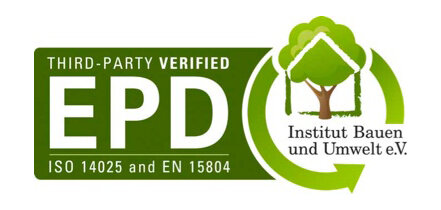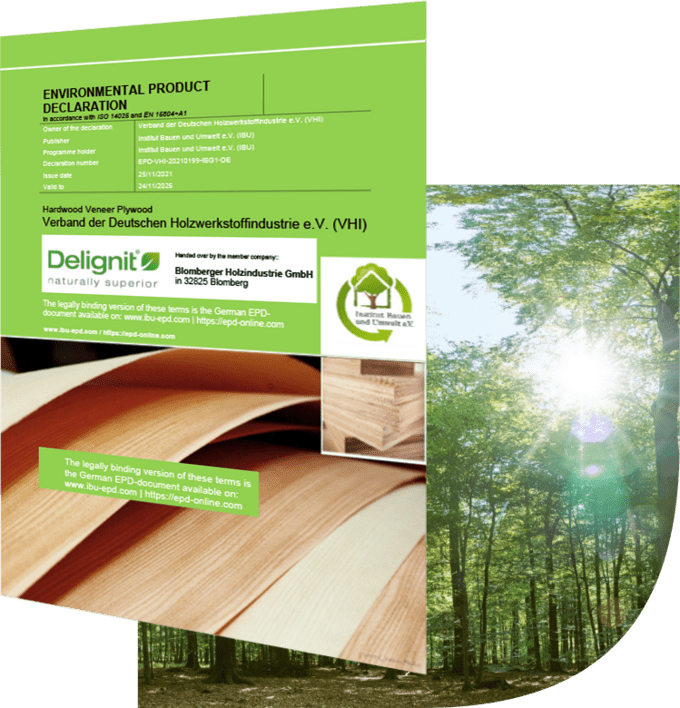To the complete product portfolio: Applications/ Product programme - Delignit

The use of Delignit products strengthens your eco-balance and contributes to climate-positive effects.

What is the basis of an EPD?
Life Cycle Assessment (LCA) is based on the international standards ISO 14040 and ISO 14044.
For which products was the EPD created?
Declared product/declared unit: 1m³ hardwood veneer plywood
For the purposes of this EPD, plywood is a panel-shaped wood-based material based on hardwood veneers. The veneers are laid in such a way that their fibre direction is arranged at an angle of 90° to each other (blocked off). They are glued together using thermosetting bonding agents.
The requirements for plywood are defined in EN 636 for general and load-bearing purposes for use in dry, damp or outdoor areas. Plywood made of hardwood veneer, normally compressed, can be used in the construction industry, in decorative interior design / furniture construction and for sports equipment, as protective and storage material, for packaging and in tool and vehicle construction. Plywood with a higher density can be used in the construction industry and for technical applications.
What global warming potential (GWP) results from the EPD?
Each cubic metre of the average beech veneer plywood stores around 340 kg of biogenic carbon over the product's lifetime.
With complete oxidation, this corresponds to a CO2 equivalent of 1247 kg, which enters the product system in the course of raw material provision (negative value in the global warming potential GWP) and inevitably leaves it again at the end of the life cycle (positive value in the global warming potential GWP). Over the entire product life cycle, the sum of the biogenic share of the global warming potential is therefore always zero.
The fossil greenhouse gas emissions for the production of the average beech veneer plywood amount to around 350 kg CO2 equivalent over the production phase (modules A1-A3).
Where can I find the EPD?
The Environmental Product Declaration can be downloaded from the programme holder (IBU - Institut Bauen und Umwelt e.V.) and from our website at
Corporate goals
Reducing greenhouse gas emissions: Buyers and developers in the technology sectors play a crucial role in the development and procurement of sustainable products in order to reduce greenhouse gas emissions and promote environmental protection.
Sustainable procurement and product development: Buyers have a responsibility to select environmentally friendly materials and suppliers, while developers create sustainable products to meet the increasing demands for environmental friendliness and gain a competitive advantage.
Resource efficiency/recycling: The use of environmentally friendly materials and easily recyclable components in vehicle production contributes to resource efficiency and to reducing the ecological footprint. This promotes recycling and the conservation of scarce resources.
Social responsibility: Sustainability in the technology industries is not only aimed at environmental requirements, but also at long-term positive effects on society. This includes taking social responsibilities into account and satisfying the increasing demand for environmentally friendly products from environmentally conscious consumers.











